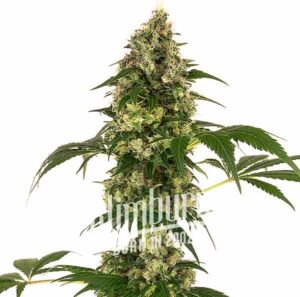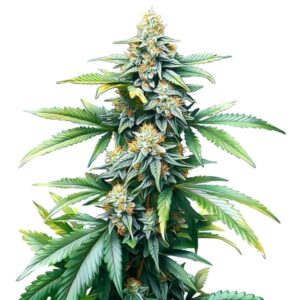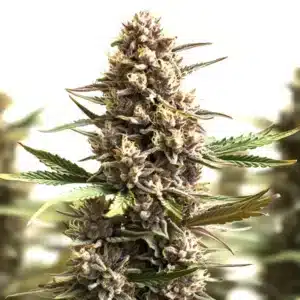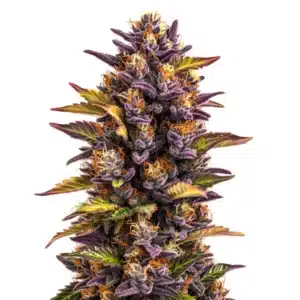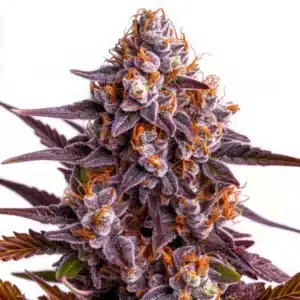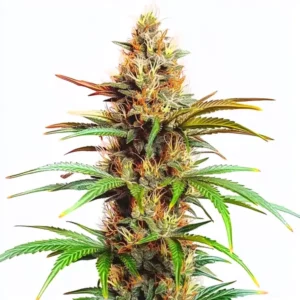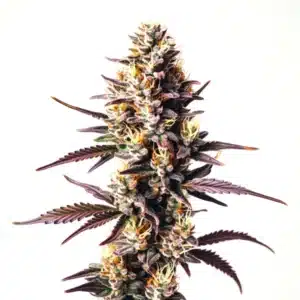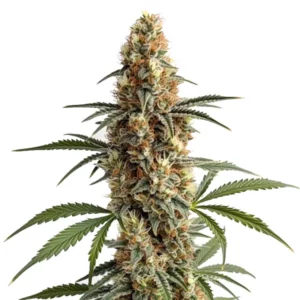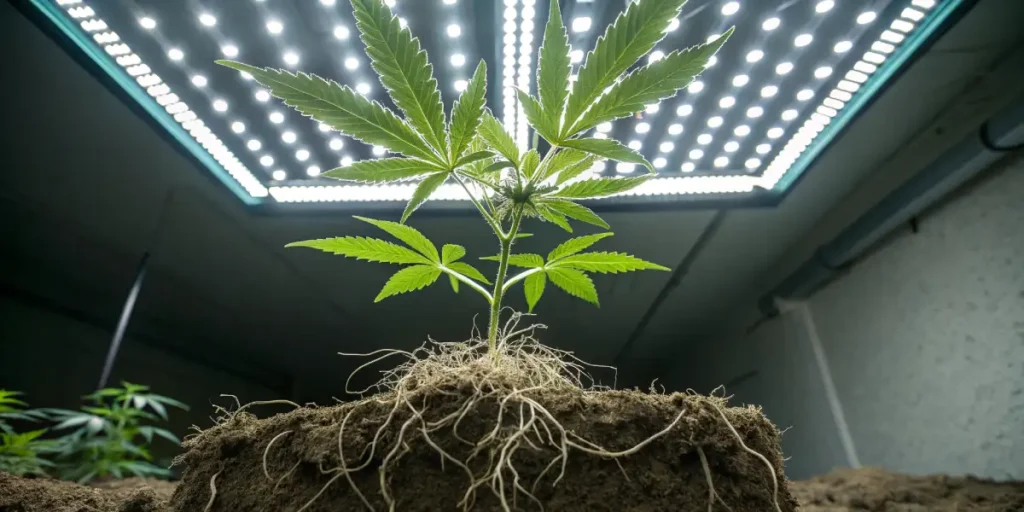
Cannabis Root Aphids: A Grower’s Guide
Cannabis root aphids can be a challenging pest for growers. These tiny insects target the roots of cannabis plants, causing significant damage and affecting yield. Recognizing their presence early is crucial to managing them effectively.
Root aphids are small, usually less than 2mm, and often blend with the soil, making them hard to spot. If left unchecked, they can stunt plant growth, and in severe cases, even kill the plant.
Recommended Strains
Afghan x Haze
|
|
THC | 22% - 25% (Medium) |
|
|
Type | Feminized |
|
|
Yield | Medium |
|
|
Phenotype | 40% Indica / 60% Sativa |
Afghan Kush Regular
|
|
THC | 18% - 22% (Medium) |
|
|
Type | Regular |
|
|
Yield | Low |
|
|
Phenotype | 90% Indica / 10% Sativa |
What Causes Root Aphid Infestations?
Root aphid infestations are often tied to specific conditions in the root zone. Pests thrive on the roots when the soil temperature becomes too high, which also causes the water to lose its dissolved oxygen, creating a stressful environment for the plant. It is also much easier for infestations to appear if you reuse your soil multiple times without proper sterilization, as eggs and larvae can survive between grows.
Identifying Cannabis Root Aphids
Spotting root aphids early can save your crop. They prefer to stay hidden in the soil, feeding directly on the roots. Symptoms of infestation include wilting, yellowing leaves, and stunted growth. Plants may look thirsty despite regular watering. Soil inspection is key; look for clusters of tiny insects around the root zone.
Cannabis Root Aphids vs. Fungus Gnats
It’s easy to confuse root aphids with fungus gnats. However, fungus gnats are more visible, often flying around the plant, while root aphids remain in the soil. Unlike fungus gnats, which primarily feed on decaying organic matter, root aphids directly attack healthy roots.
Promos & Deals
Cannabis Root Aphid Treatment Options
Once identified, treating root aphids promptly is vital. Chemical treatments include systemic insecticides, but these should be used cautiously.
As another treatment method, some growers find success by adjusting the water pH. If you have a pest infestation, you can try lowering the pH of your irrigation water to a more acidic 5.5. This can help make the root zone less hospitable to the aphids and assist in eradicating them.
Exploring organic methods, such as neem oil, offers a gentler approach. Introducing beneficial soil organisms can also naturally suppress aphid populations.
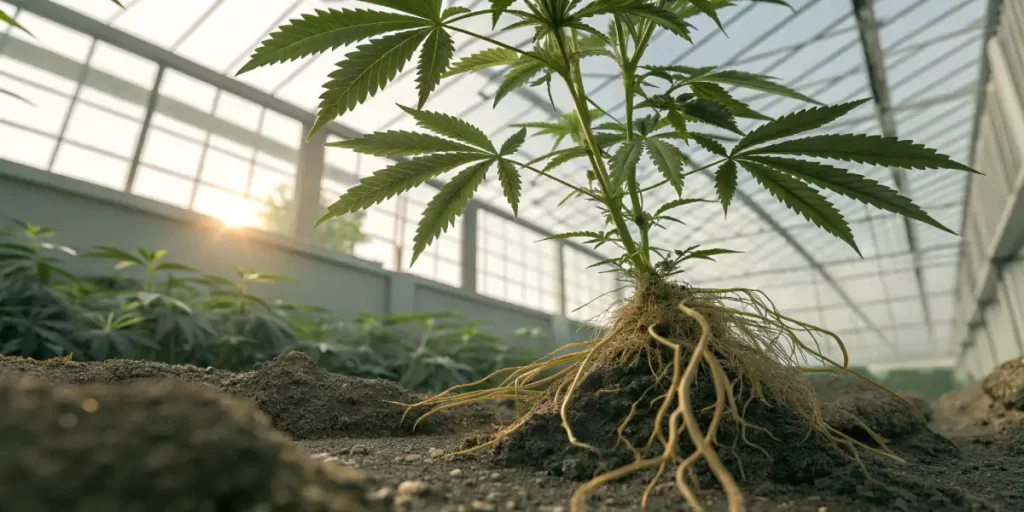
Natural Predators of Cannabis Root Aphids
Introducing natural predators is a popular organic approach. Predatory insects like ladybugs and certain beneficial nematodes can help control root aphid populations. Nematodes are microscopic worms that target pests in the soil and are safe for plants.
Preventing Future Infestations
Prevention is always better than cure. Ensuring proper sanitation and pest management can reduce the likelihood of infestations. Rotate your crops and avoid reusing soil without proper sterilization.
Applying a layer of mulch to the topsoil is another excellent preventative measure. Mulch helps to keep the main root system from getting too hot and ensures that the water in the soil does not lose its oxygen as quickly, which discourages pests.
Soil and Environmental Management
Maintaining healthy soil conditions is crucial. Ensure your soil has good drainage and is not overly compacted. This starts with your water. The temperature of your irrigation water is very important; always monitor it and ensure it is around 17-18°C (63-65°F) to avoid shocking the roots. Furthermore, the pH values of your water must be controlled. Always measure the pH after adding nutrients and adjust it to a consistent 6.0 before watering.
Consider using beneficial fungi and bacteria in your soil mix. These microorganisms can boost plant health and resilience. Incorporating organic matter, such as compost, also enriches the soil and supports beneficial microbes.
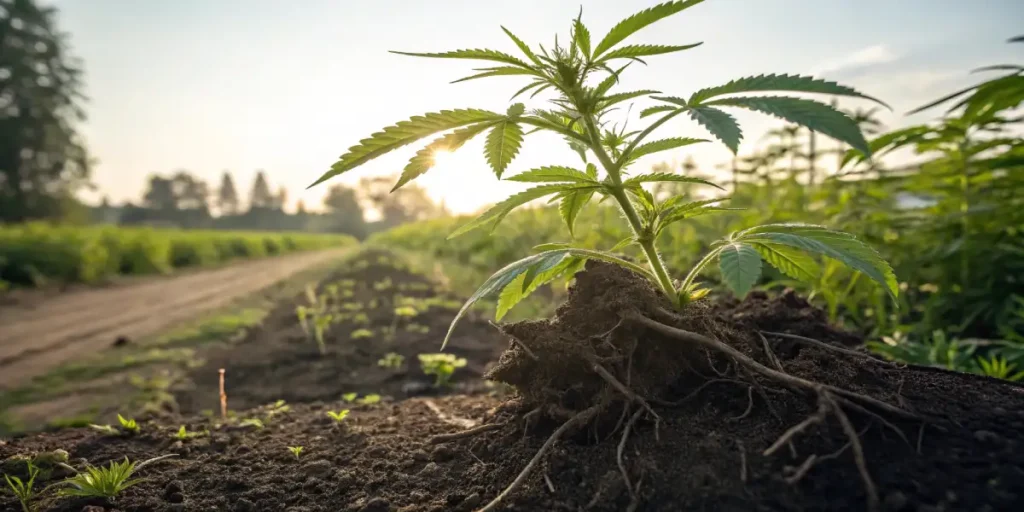
FAQs
What are the first signs of a cannabis root aphid infestation?
The first signs often include wilting and yellowing leaves. Despite adequate watering, plants may appear dehydrated. These symptoms result from the aphids’ impact on the roots’ ability to uptake water and nutrients.
Another sign is the presence of honeydew—a sticky substance that aphids secrete. This can lead to mold growth on the soil surface, further complicating plant health.
Recognizing the symptoms of cannabis root aphid infestation early is crucial. Regularly inspect soil surfaces for honeydew and monitor plant health closely for any sudden changes.
Checking root systems for physical damage or discoloration can also provide insights into the severity of an infestation. Early detection allows for more effective management strategies.
How can I differentiate between root aphids and other pests?
Distinguishing root aphids from other pests requires close observation. Unlike fungus gnats, these pests do not fly and remain in the soil. Use a magnifying glass to inspect the roots and soil surface carefully.
Look for small, often white or brown insects clinging to the roots. They may sometimes be mistaken for soil particles, so a detailed inspection is necessary.
Knowing how to identify them involves observing their behavior. These pests tend to cluster around the plant’s base, whereas other pests, like fungus gnats, have more mobile adult stages.
Regular monitoring of plant health and soil conditions can aid in distinguishing between various pests. Consistent checks help identify the specific issues affecting plant growth.
Are there any effective non-chemical treatments for root aphids?
Yes, several non-chemical treatments are effective. Introducing natural predators, such as nematodes, can help control the aphid population. These microscopic worms seek out and consume them.
Neem oil and insecticidal soaps are also popular organic treatments. They can be applied to the soil to deter and kill aphids without harming the plant.
Exploring non-chemical cannabis root aphid treatment options further, diatomaceous earth can be sprinkled on soil surfaces as a physical barrier against aphids, desiccating them on contact.
Additionally, maintaining optimal environmental conditions, such as proper humidity and temperature, can prevent aphid proliferation, supporting plant resilience naturally.
What strains are recommended for pest-prone environments?
When dealing with pest-prone environments, selecting robust strains is beneficial. Blue Dream and Gorilla Glue 4 are excellent choices due to their hardiness and high yield potential.
These strains have a reputation for withstanding environmental stressors, making them ideal for growers facing persistent pest issues.
Another excellent choice for pest-resistant cultivation is the Sunset Sherbert strain, known for its adaptability and resilience under various growing conditions.
Choosing strains with natural resistance to pests can ease the management burden, allowing growers to focus on optimizing other aspects of the cultivation process.
How can I improve my soil health to prevent root aphids?
Improving soil health involves ensuring good drainage, proper aeration, and the presence of beneficial microorganisms. Avoid compacted soil, which can create conditions favorable for pests.
Incorporate organic matter and compost into your soil mix. This practice supports a healthy ecosystem, making it less likely for root aphids to thrive.
Enhancing soil health further involves regular soil amendments with natural fertilizers that boost plant nutrition, promoting vigorous growth and reducing susceptibility to cannabis root aphids.
Utilizing cover crops during off-seasons can also enrich soil health, improving its structure and fertility, while simultaneously deterring pests through enhanced ecosystem dynamics.


